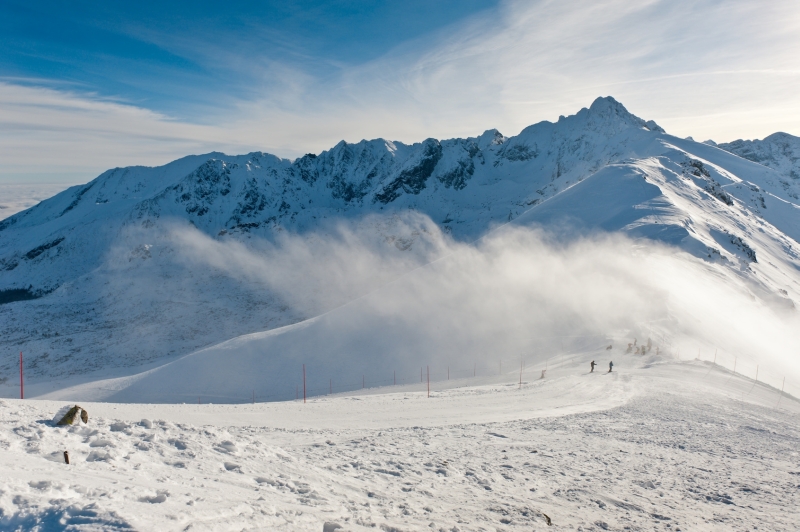Disturbance of winter hibernation
High quality habitats chosen by bears for winter hibernation are also attractive for ski enterprise. The period of intensive operation of ski resorts overlaps with bear hibernation – the physiological state most sensitive to disturbance.
Currently approximately 200 ski resorts operate within the bear distribution area in the Carpathians, the Lesser Poland, the Silesian and Podkarpackie voivodships. Development and construction of 40 ski resorts is planned.

Functioning of these resorts entails huge human pressure (standard capacity of a chairlift is 3000 people/h) and creates factors frightening animals off such as light and noise generated by artificial lighting and snowmaking. According to the assumptions adopted from research the range of negative impact of these factors is not point but stretches as a buffer that can be up to 4 km wide starting from the source of the disturbance. Within this area habitat transformation is so deep that it fails to meet the requirements of animals’ basic vital functions.
The forms of winter activity that are particularly threatening to brown bears are those related to penetrating bears’ winter refuges such as freeride skiing, snowmobile rides, skitouring and moving on snowshoes. Driving a wintering bear from its den is dangerous for each individual as it must use its body fat store (disturbance in energy balance). It is particularly damaging for pregnant females and newborn bear cubs as it dramatically increases the risk of premature death and miscarriage. According to Scandinavian research the rate of loss of young in females who change their wintering sites in relation to those who do not do this is 60% to 6%[1].
Meanwhile in Poland the ban on using certain ski runs applies only in national parks while some resorts situated in Natura 2000 sites openly promote freeride skiing (ex. ON Pilsko in Korbielów, adjacent to the Pilsko nature reserve).
[1] Swenson J. E. et al. 1997







